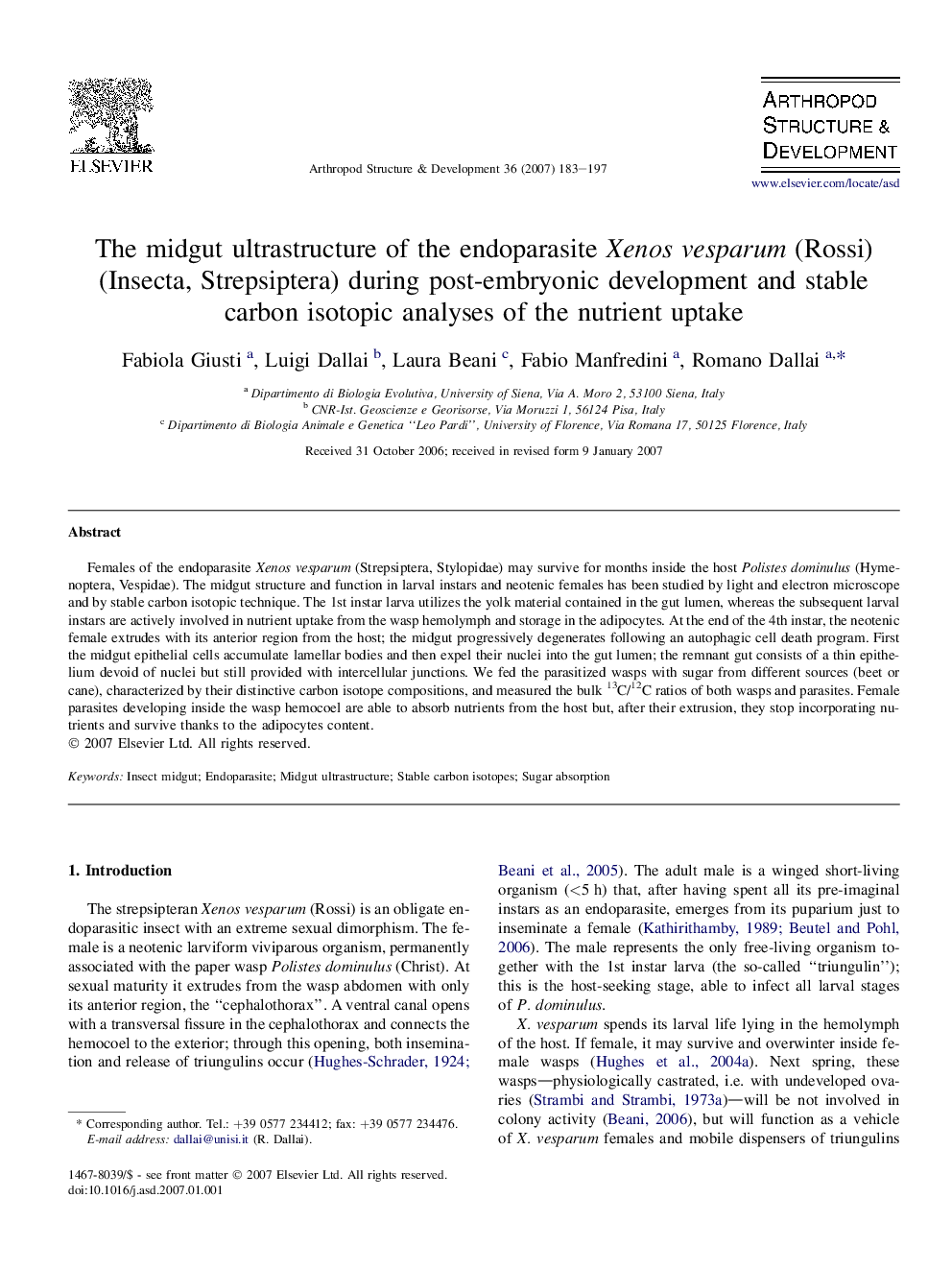| Article ID | Journal | Published Year | Pages | File Type |
|---|---|---|---|---|
| 2778994 | Arthropod Structure & Development | 2007 | 15 Pages |
Females of the endoparasite Xenos vesparum (Strepsiptera, Stylopidae) may survive for months inside the host Polistes dominulus (Hymenoptera, Vespidae). The midgut structure and function in larval instars and neotenic females has been studied by light and electron microscope and by stable carbon isotopic technique. The 1st instar larva utilizes the yolk material contained in the gut lumen, whereas the subsequent larval instars are actively involved in nutrient uptake from the wasp hemolymph and storage in the adipocytes. At the end of the 4th instar, the neotenic female extrudes with its anterior region from the host; the midgut progressively degenerates following an autophagic cell death program. First the midgut epithelial cells accumulate lamellar bodies and then expel their nuclei into the gut lumen; the remnant gut consists of a thin epithelium devoid of nuclei but still provided with intercellular junctions. We fed the parasitized wasps with sugar from different sources (beet or cane), characterized by their distinctive carbon isotope compositions, and measured the bulk 13C/12C ratios of both wasps and parasites. Female parasites developing inside the wasp hemocoel are able to absorb nutrients from the host but, after their extrusion, they stop incorporating nutrients and survive thanks to the adipocytes content.
